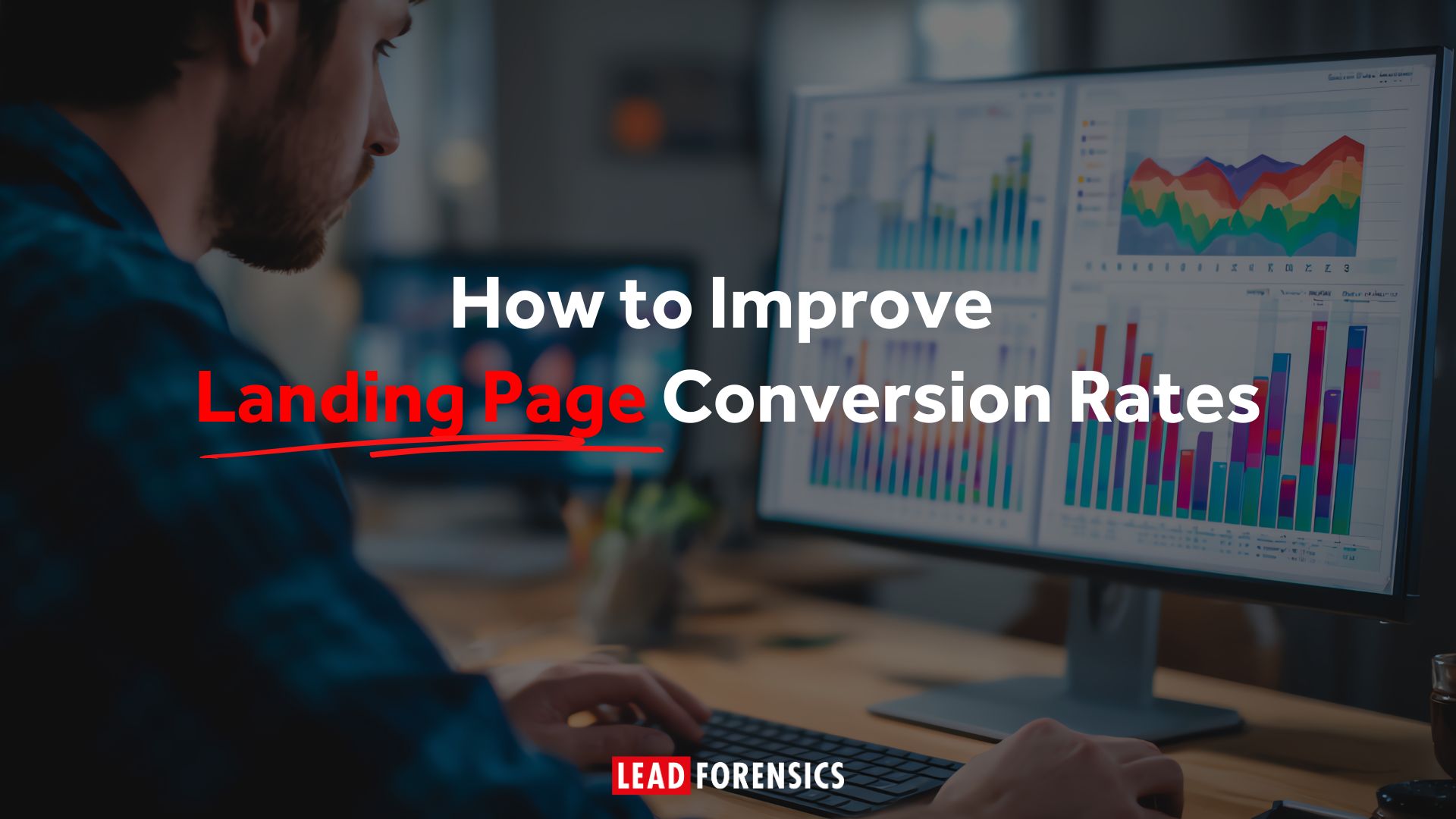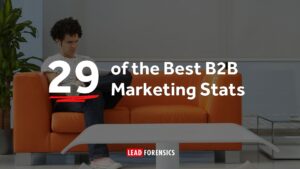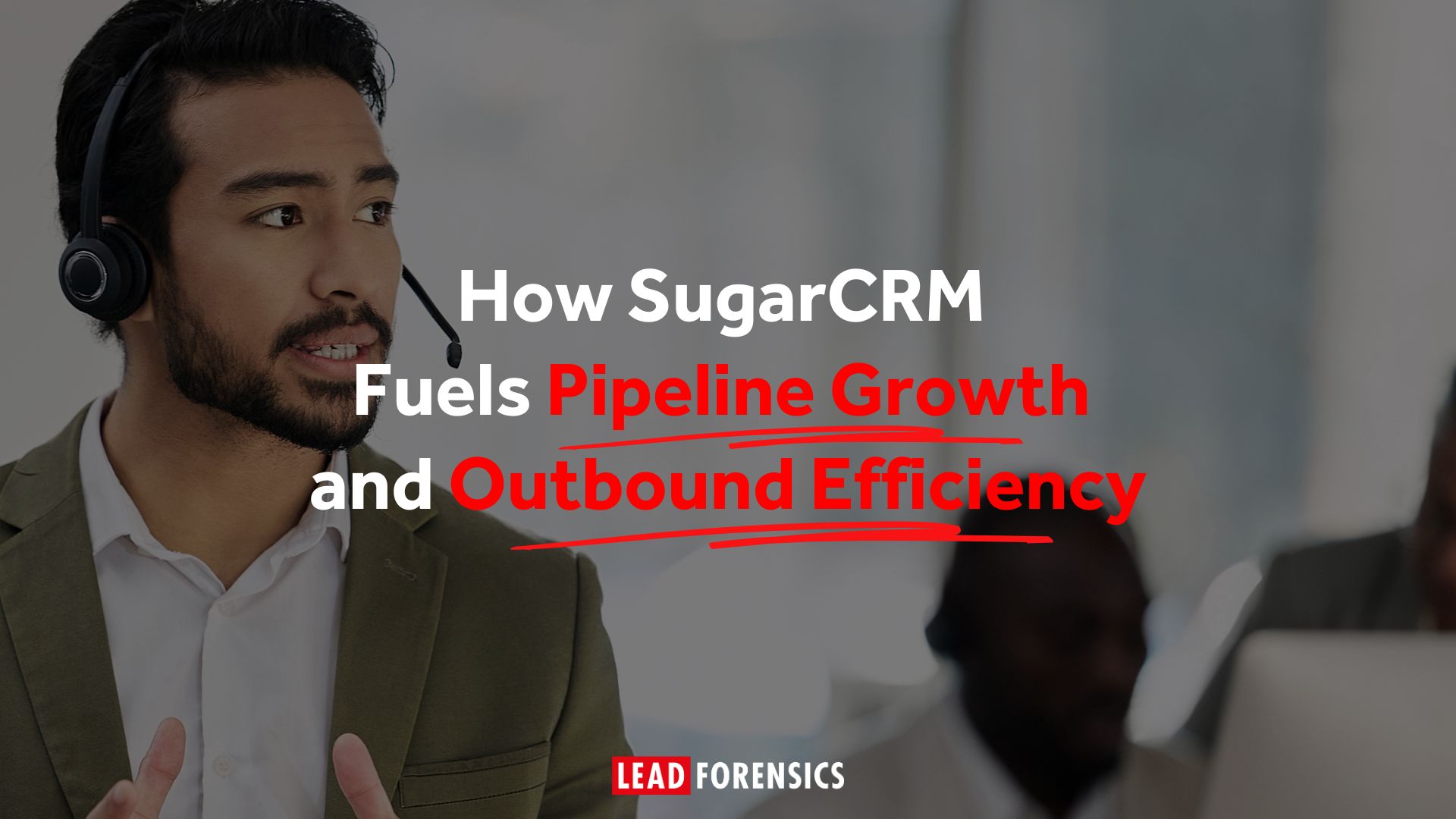Onur joined us for a Landing Page Development Workshop, when he discussed ways to help B2B marketers who are struggling with low conversion rates on their landing pages.
Why Many Landing Pages Fail to Convert
There’s one fundamental mistake people make when it comes to landing pages, and that’s building them around what companies want to say, instead of what users need.
“The biggest reason [landing pages don’t convert] is people just don’t think about the user; they think about their own stuff,” Onur explained. “Everyone loves their website and logos, but no one really cares. What people care about is what’s in it for them.”
In other words, if your page talks all about you – your product, your features, your brand – without immediately addressing the visitor’s problem or desire, you’re likely to lose them.
Another element to consider when you’re optimizing the conversion rate of your landing page is distraction. Many companies drive paid traffic to generic web pages full of navigation links and unrelated content, which only encourages visitors to click away to other sections instead of converting.
If you want your landing page conversion rates to improve, you need the pages to be focused. They should be dedicated, standalone pages with a single goal and no extraneous links.
As Onur noted, a proper landing page has no top navigation and only one action for the user to take. Anything more creates friction and gives busy visitors an “exit” before you get their details.
Understand the Psychology of Online Behavior
The reason your landing page needs to have a single focus is because online audiences don’t have the patience for complexity.
“Humans are lazy, and we do not like looking for the answer – we prefer looking for ways to avoid the answer,” Onur explained.
The reality is that if your landing page makes your users think too much or hunt for information, they’ll bounce to an easier solution – and likely a competitor.
Remember: website visitors are often multitasking, with short attention spans and a desire for quick fixes. In this context, only a compelling story will keep them engaged. If you can hook a prospect with a narrative that resonates, and show you understand their pain and can solve it, they’re more likely to stay and convert. But the moment that story becomes unclear or disjointed, attention drifts.
Crucially, every action you ask of a user has a ‘cost’ in effort or attention:
- Simply reading text is the lowest cost action.
- Scrolling down a page is a bit more effort.
- Clicking a link or button is higher cost (and a major cause of drop-offs)
- Typing information into a form is the heaviest effort of all.
Each additional step or decision is an opportunity for the lazy brain to disengage. If you want to improve landing page conversions, minimize the mental and physical effort required from the user at every stage.
Design for Clarity and Low Cognitive Load
To cater to short attention spans, you need to design your landing pages for instant clarity.
Onur stressed that you have about three seconds to convince a visitor they’re in the right place and should stay. That means your core message, across your headline, subtitle, or hero section, must immediately answer: “Why am I here, and what value do I get?” If a visitor can’t figure out your offer in a glance, they’ll leave.
A clear, conversion-focused landing page should present information in bite-sized chunks. Use a clean layout with obvious hierarchy: punchy headlines, short paragraphs, and plenty of white space. The less clutter and cognitive load, the easier it is for users to absorb your message and move toward the call to action.
In fact, reducing how much users have to think or do directly boosts conversion. Every unnecessary form field, extra click, or off-topic detail you can remove is a win for your landing page conversion rate.
These tips should help build a focused, conversion-friendly landing page:
- Limit each landing page to a single purpose. Whether it’s downloading an eBook, signing up for a demo, or making a purchase, make that action obvious and easy.
- The call-to-action (CTA) should stand out and feel natural in the flow of the page. Choose the format that best suits your audience and offer. For example, on some B2B pages a simple “Book a Demo” button that opens a calendar can outperform a long form, because it skips the tedious typing.
- Make the conversion step a no-brainer. The button or form should be prominently placed (often repeated at the top and bottom of the page) and labeled with a clear, benefit-oriented prompt.
Storytelling and Social Proof: Persuade with the Four P’s
Effective landing pages aren’t just well-designed; they’re also persuasive. Onur advocates using the “four P’s” of storytelling to craft your landing page narrative:
- Pain: Start by addressing the visitor’s pain point or problem. Show that you understand what they’re struggling with. This grabs attention because it’s immediately relevant to them.
- Promise: Next, present your promise and outline how your product or service can resolve that pain. This is essentially your value proposition or solution in a nutshell.
- Proof: Before a user will trust your promise, they need proof. Include credible evidence that your solution works. This could be customer testimonials, case study stats, client logos, or even a quick demo video.
- Persuasion: There are psychological levers you can pull to persuade a user to convert, whether that’s appealing to urgency, value, or exclusivity in your call to action.
Structurally, much of this persuasive storyline should appear above the fold so that it’s visible without scrolling. Additional details, more proof points, and any longer explanations can go below the fold for those who scroll. Don’t hide your customer success stories or credentials at the bottom; surface them early and often.
Be aware that consistency counts, which means the messaging in your ads or emails need to match the content on the landing page. Any disconnect between an ad’s promise and the landing page headline can confuse users, hurt your credibility and kill conversions.
Track the Metrics that Matter
Great landing pages are data-driven. To truly unlock the science of conversions, marketers must dive into their web analytics and user behavior data. That means monitoring a spectrum of marketing metrics to diagnose where prospects drop off in your funnel.
Some key metrics and tools you should track include:
- Page load time: Slow pages kill conversions, so try to optimize images, code, and hosting to ensure your landing page loads in a snap.
- Click-through rate (CTR) vs. landing rate: If you’re running ads or email campaigns, compare how many people clicked your link to how many actually loaded the landing page. A gap here could indicate tracking issues or slow load times causing drop-offs.
- Bounce rate and time on page: High bounce rates or very short time on page suggest visitors aren’t finding what they expected or aren’t engaged. This often points to a messaging mismatch or a page that fails the three-second rule outlined above.
- Repeat visits: Are prospects coming back multiple times? Repeat visits can indicate interest but can also be a sign of confusion if they need several tries to understand your offer. Use this alongside conversion data to gauge if the page is clear.
- Scroll depth & click maps: Heatmap tools like Hotjar or Mouseflow show how far down the page people scroll and where they click. This visual insight reveals if users see your key content. For instance, if many never scroll past your headline, those below-the-fold testimonials might be unseen. Scroll maps tell you if important information or forms are placed too low, while click maps help identify any distracting elements that may be clicked before the desired conversion.
- Form abandonment: If your landing page has a multi-step form, track where users give up and see if you can streamline the information you’re asking for.
To gather these insights, use analytics platforms and behavior tools in combination. For example, Google Analytics (or GA4) and Adobe Analytics can report basics like bounce rate, time on site, and conversion rates, while qualitative tools like session recordings, heatmaps, and form analytics show you why users behave in a certain way.
Optimize for Mobile and Simplify Forms
In B2B, you’d expect users to spend more time browsing the web on desktops, but mobile browsing is also an important experience.
To boost your landing page conversion rates, you need to design them to be mobile-first. That means starting with the constraints of a small screen, which often forces you to prioritize what really matters. After all, if you can tell a coherent story on a 6-inch smartphone display, it will only be easier to adapt it to a large desktop screen.
Mobile-first design also inherently improves clarity. It demands shorter text, larger buttons, and cleaner layouts, which benefit all users.
Consider mobile ergonomics, too. On a cell, users mostly scroll and tap with their thumb. You need to ensure your buttons are thumb-friendly: make them big, centered or full-width, and with plenty of whitespace around them. Make sure you avoid placing important buttons or form fields on the extreme edges where they’re hard to reach and give form fields and clickable elements enough padding, so people don’t accidentally hit the wrong thing.
Personalize for Better Conversions
A one-size-fits-all landing page is a missed opportunity
“Don’t just have one landing page for everybody; have multiple landing pages for different personas,” Onur advised. “Use dynamic content where possible.”
If your target audience segments have distinct pain points, create variants of your page that speak directly to each segment. For example, you might have one version of a page for finance executives and another for marketing managers, each with industry-specific language and proof points.
Modern marketing automation tools like HubSpot – and B2B website personalization SaaS Webeo – allow you to swap in dynamic text or images on your landing pages based on who’s viewing. Even something as simple as addressing the visitor’s industry or using their first name can make the experience feel more relevant and engaging to them.
Get Greater Insights on What Visitors Actually Do
Website visitor identification tools like Lead Forensics give a clearer picture of which companies are visiting your pages, how those visitors behave, and where engagement breaks down, even when visitors don’t convert. It helps you understand where the friction lies on your landing pages so you can further investigate – but it also empowers you to identify warm leads that you can pass on to your B2B sales team.









